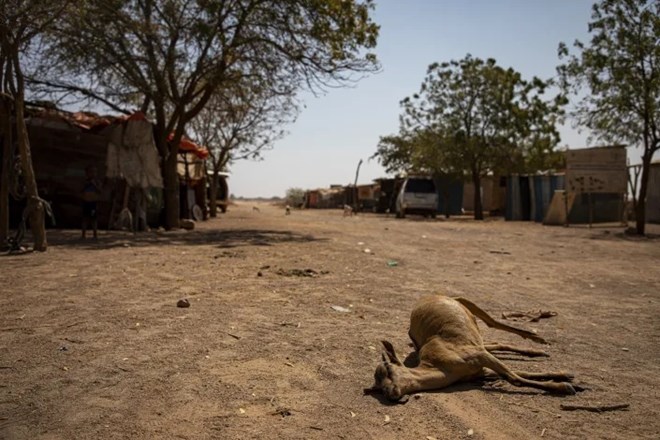The United Nations has warned that 350,000 children in Somalia might starve to death unless the international community comes together to offer food aid to the impoverished African country, which is suffering from a fourth year of devastating drought exacerbated by climate change.
“As we speak, 1.4 million children under the age of five are critically malnourished, and it is estimated that 350,000 of them would die by the summer of this year if we do not step up our intervention.” “It doesn’t get any worse,” said Adam Abdelmoula of the United Nations Office for the Coordination of Humanitarian Affair”As a result, I’m appealing to all those who can help, including the Somali diaspora, the business sector, and the international community, traditional and nontraditional donors, everyone, to act and to act now.”
After three years of drought, Somalia’s greatest river, the Juba, is almost completely dry. A total of 4.5 million people have been affected by the scarcity of water, many of whom work as farmers.
“Of all the droughts I’ve seen in my 70 years, this is the worst,” Ahmad Hassan Yarrow, a Somali native forced to flee his house in search of food and water, told the United Nations.
The United Nations Intergovernmental Panel on Climate Change recently released its sixth assessment of the state of the world’s climate, warning that climate change and an ongoing La Nia — a climate pattern resulting in dryer weather for the Horn of Africa — were to blame for the drought and soaring temperatures baking the region.
The repercussions of climate change are being felt deeply by youngsters in a country that has undergone decades of political instability and tremendous poverty.
“Currently, 70% of school-aged youngsters in this country do not attend school. “The drought has forced the closure of 40 schools in just one state in Juba territory, and this will be the norm in many drought-affected areas,” Abdelmoula added.
According to the BBC, more than 700,000 people have already been displaced as a result of years of drought, forcing them to trek arid highways filled with animal carcasses in order to reach population centers in search of food, water, and shelter.
Worse, Russia’s invasion of Ukraine, from where many African countries get their wheat and cooking oil, has exacerbated the situation.
“As a result of Russia’s invasion of Ukraine, the Food and Agricultural Organization anticipates that up to 13 million additional people around the world may face food insecurity.” The truth is that Putin’s war forces us to steal from the hungry in order to feed the hungry. “Innocent people will pay the price as long as Russia maintains its cruel campaign,” Cindy McCain, the United States’ representative to United Nations agencies in Rome, warned last week.
Somalia faces “a possibility of famine” as a result of food and water scarcity, as well as high import wheat prices, according to Abdelmoula.
The United Nations’ Somalia Humanitarian Response Plan aims to gather approximately $1.5 billion to offer humanitarian aid to 5.5 million of the most vulnerable people in Somalia. To date, however, it has taken in just $56.1 million, or 4% of that total.
The problems are not limited to Somalia. According to the the International Committee for the Red Cross, at least one-quarter of Africa’s population now faces food insecurity due to factors like drought and higher prices.
Climate change is rapidly becoming a constant threat to Africa. Industrialized nations continued to wrestle with the reality that Africa, in particular, was poised to suffer the brunt of a problem that was not of its own design during the United Nations Climate Change Conference in Glasgow, Scotland, in November. While the countries at the summit reaffirmed a vow that wealthy countries would pay $100 billion per year to developing countries to help them change their economies and meet greenhouse gas emission objectives, the money has not been delivered.
An agreement for affluent countries to give “loss and damage” funds for poorer countries to deal with the expenses of catastrophic occurrences linked to climate change, such as the continuing drought in Africa, is even more challenging.
Of course, the dire situation in Somalia is not an isolated one. As global temperatures continue to rise, the IPCC warns, “by 2030 half the continent of Africa could be displaced as a result of climate change.”

